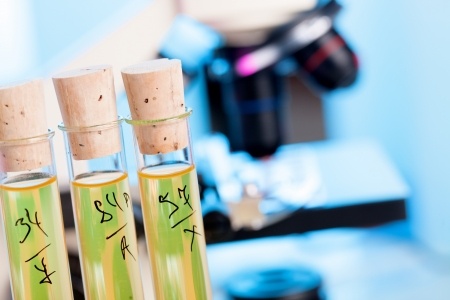
Analytical techniques come and go but Fourier Transform-Infrared (FT-IR) Spectroscopy has been in the toolbox for over 30 years. It may well be because it is straightforward to apply and the technology has become so refined that instruments of measurement are rapid, easy and simple to use with minimum sample preparation. A number of companies have equipment available but I recommend ThermoFisher Scientific as one great business with the type of equipment ideal for the application I wish to discuss – food adulteration.
FT-IR allows for the qualitative determination of organic compounds as the characteristic vibrational mode of each molecular group causes the appearance of bands in the infrared spectrum at a specific frequency, which is further influenced by the surrounding functional groups. Moreover, FT-IR spectroscopy is an excellent tool for quantitative analysis as the intensities of the bands in the spectrum are proportional to concentration because where Beer’s law is obeyed.
Passing off food as something else has been a common problem for the customer, ever since foodstuffs had a value and a price, were rare or simply not good enough for retail. Certain unscrupulous suppliers of these foods have sought ways to maximise profits by replacing some of their higher-cost food materials and ingredients with other less expensive, lower quality substitutes and passing them off as something else. The objective is usually to obtain more money for them than their actual worth – a clear case of economic fraud. In fact, as the potential for profiteering rises, techniques for food adulteration become more sophisticated and traditional methods used in detection of adulterants become increasingly time-consuming and expensive.
In some cases, adulteration leads to death ! Adulteration of rapeseed and grapeseed oils in the 1980’s caused 400 deaths and over 20,000 forms of illness due to toxic-oil syndrome (Jimeno, 1982; Posada et al., 1987). Regulatory agencies, the law and governments have become intimately involved in resolving adulteration issues
Olive oil has been a popular target because the best quality is extremely highly prized and priced. It began with cases in Roman times. In the European Union alone, there have been losses of up to 15 million euros annually. From 1995, FT-IR began to be increasingly applied to winkling out the adulterants in olive oil, especially cheaper vegetable oils (Lai et al., 1995; Marigheto et al., 1998; Kupper et al., 2001; Tay et al., 2002). Depending on the adulterant oil, the detection limits for olive oil adulteration were as low as 2%, and analysis could be completed in less than 5 min.
Given detection limits, it is thought some suppliers have substituted extra virgin olive oil with nearly 20% hazelnut oil because it is much harder to detect. It appears hazelnut oil has a similar fatty acid/sterol composition, and oxidative stability to olive oil which means substitution is almost too simple (Parcerisa et al., 1998; Contini et al., 1997). In 2002, a technique using FT-IR was employed which was combined with discriminant analysis and partial least-squares analysis to detect hazelnut oil adulteration of olive oil but only to 25% volume (Ozen and Mauer, 2002). The technique was more successful in detecting sunflower oil adulteration of hazelnut oils.
Mid-infrared spectra have been used to characterize edible oils and fats, because they differentiate in the intensity and the exact frequency at which the maximum absorbance of the bands appears, according to the nature and composition of the sample.
There is an excellent review on the subject by Rodriguez-Saona & Allendorf (2011) on the general applications of technique where adulteration is concerned.
References
Contini, M.; Cardarelli, M. T.; Santis, D.; Frangipane, M. T.; Anelli, G. (1997) Proposal for the edible use of cold pressed hazelnut oil. I. Evaluation of oxidative stability. Riv. Ital. Sostanze Grasse. 74, pp. 97-104.
Jimeno, S. A. (1982) The Spanish toxic symptoms. Trends Anal. Chem. 1, pp. 4-6
Kupper, L., Heise, H. M., Lampen, P., Davies, A. N., McIntyre, P. (2001) Authentication and quantification of extra-virgin olive oils by attenuated total reflectance infrared spectroscopy using silver halide fiber probes and partial least-squares calibration. Appl. Spectrosc. 55, pp. 563-570
Lai, Y. W.; Kemsley, E. K.; Wilson, R. H. (1995) Quantitative analysis of potential adulterants of extra-virgin olive oil using infrared spectroscopy. Food Chem. 53, pp. 95-98.
Marigheto, N. A., Kemsley, E. K., Defernez, M., Wilson, R. H. (1998) A comparison of mid-infrared and Raman spectroscopies for the authentication of edible oils. J. Am. Oil Chem. Soc. 75, 987-992.
Ozen, B. F., & Mauer, L. J. (2002). Detection of hazelnut oil adulteration using FT-IR spectroscopy. J. Agric. Food Chem., 50(14), pp. 3898-3901
Parcerisa, J., Richardson, D. G., Rafecas, M., Codony, R., Boatella, J. (1998) Fatty acid, tocopherol and sterol content of some hazelnut varieties (Corylus aVellana L.) harvested in Oregon (USA). J. Chromatogr. 805, pp. 259-268.
Posada, M., Castro, M., Kilbourne, E., Diaz-de-Rojas, R., Abaitua, I., Tabuenca, J., Vioque, A. (1987) Toxic-oil syndrome: case reports associated with the ITH oil refinery in Sevilla. Food Chem. Toxicol. 25, pp. 87-90
Rodriguez-Saona, L. E., & Allendorf, M. E. (2011). Use of FTIR for rapid authentication and detection of adulteration of food. Annual Review of Food Science and Technology, 2, pp. 467-483.
Tay, A., Singh, R. K., Krishnan, S. S., Gore, J. P. (2002) Authentication of olive oil adulterated with vegetable oils using Fourier transform infrared spectroscopy. Lebens.-Wiss. Technol. 35, pp. 99-103

Leave a Reply